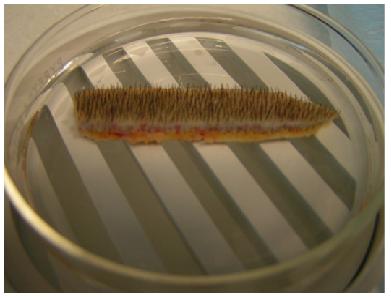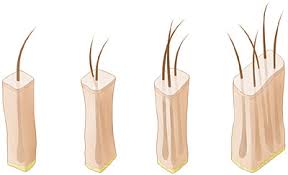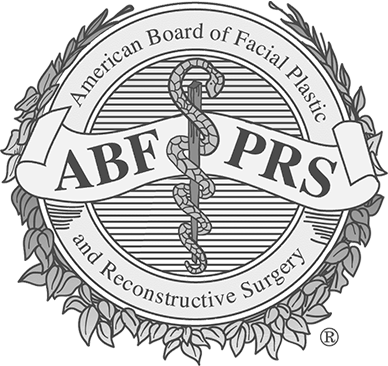Donor Harvest & Graft Preparation
Harvesting of the donor strip can be done in several different ways. Donor hair is typically located in the back of the head (see image below). The exact amount of donor hair depends on the amount that is never going to fall out, thus it will stay forever once transplanted to the front. This varies in each patient depending on their genetically determined hair loss pattern. The hair in the back of the head can be harvested by excising a single strip, by removing multiple strips or by harvesting individual follicular units (follicular unit extraction, FUE, will be discussed in a later page).
At Utah Hair Restoration, during donor strip harvesting, we mark off a section from just above one ear to above the other ear that is about 1.5 cm wide. This strip of hair is then trimmed to about 3 mm in length. The area is anesthetized with Lidocaine and then infiltrated with saline. A scalpel blade is then used to remove the strip of hair. Great care is taken to cut the strip out while paralleling the hair follicles present. This helps maximize the number of follicles that can be harvested in each strip.
Graft Preparation
Once the donor strip is harvested, it is taken and placed in cold, sterile saline. The strip is then taken and slivered into slits. The slits are taken and divided into the follicular units. When dividing the hair into follicular units, it is important to handle the follicle delicately while trimming off the excess tissue. The entire follicular unit is kept intact and special care is taken to avoid injuring the regenerative portion of the graft. See the video below of graft slivering and follicular unit isolation.
As the follicular units are prepared, slivered and isolated into the individual units, they are always kept in sterile, chilled saline. Heat and dryness are the two factors that will most dramatically adversely effect graft survival.
Graft preparation is very tedious and can be time and labor intensive. Also, the hair grafts, once removed from the body, will die if left out for too long. While skin kept cold or even frozen, has been shown to survive for many days, hair must be reimplanted as soon as possible. We like the time from excision to reimplantation to be not more than a few hours.
Because of the time and labor intensive requirements of graft preparation, a capable and efficient team must be assembled. A team of 6-7 people is typical for each hair case to ensure speed and efficiency. In most cases, when a 1.5 cm strip is harvested from ear to ear, the total number of follicular units obtained is between 1750 and 2200 grafts. This generally comprises a single, large session hair transplant.



